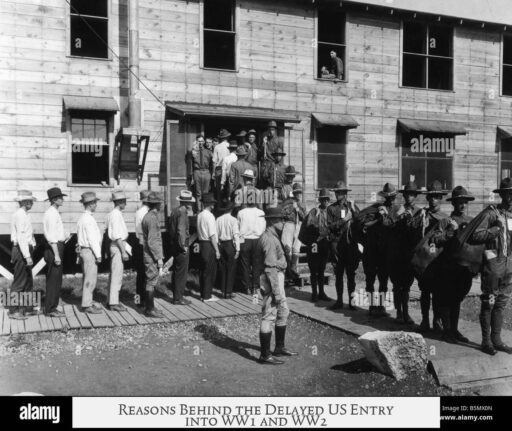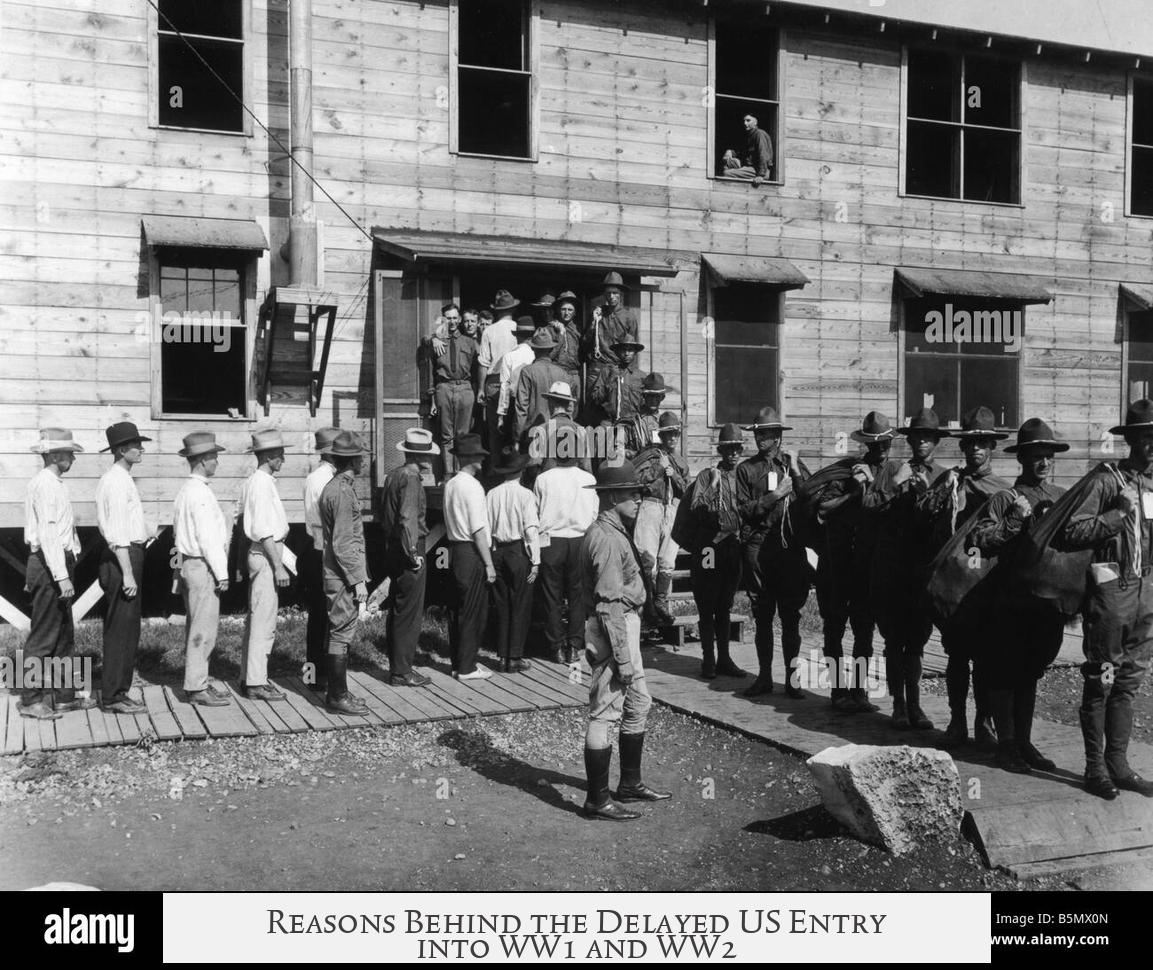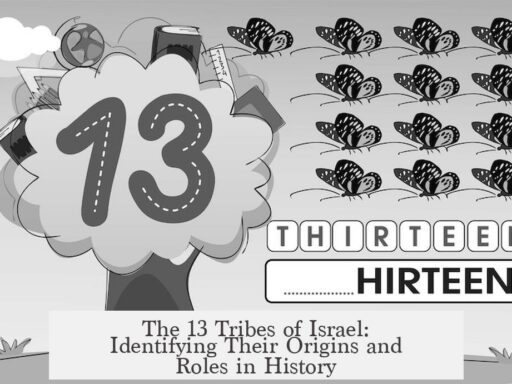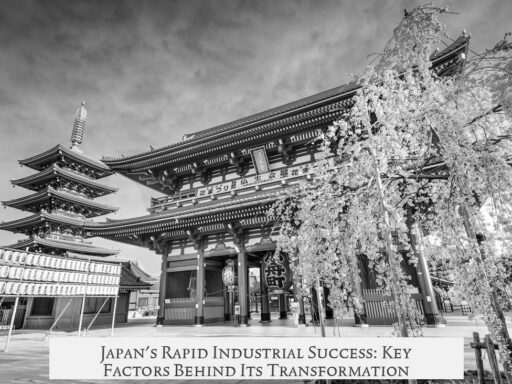The United States did not enter World War I and World War II earlier due to a combination of ethnic diversity, strong public and political desires for neutrality, limited military preparedness, and presidential policies aimed at maintaining impartiality and national unity.

During World War I, the U.S. population included many ethnic groups with ties to nations involved in the conflict. This diversity caused divided loyalties, making it difficult for the government to support one side without alienating significant portions of Americans. President Woodrow Wilson emphasized neutrality, urging citizens to remain impartial in both thought and action. He warned against the dangers of partisanship, which could divide Americans into hostile camps and threaten domestic peace.
The Wilson administration adopted an official stance of neutrality beginning in August 1914. Wilson framed this policy as a moral duty, declaring that real patriotism consisted of fairness and friendliness to all parties involved in the war. This policy aimed to keep the nation united and prevent internal conflicts that might arise from supporting one warring faction over another. Only after explicit provocations by Germany, such as the violation of the Sussex pledge and the Zimmerman note’s exposure, did the United States shift from neutrality toward war.
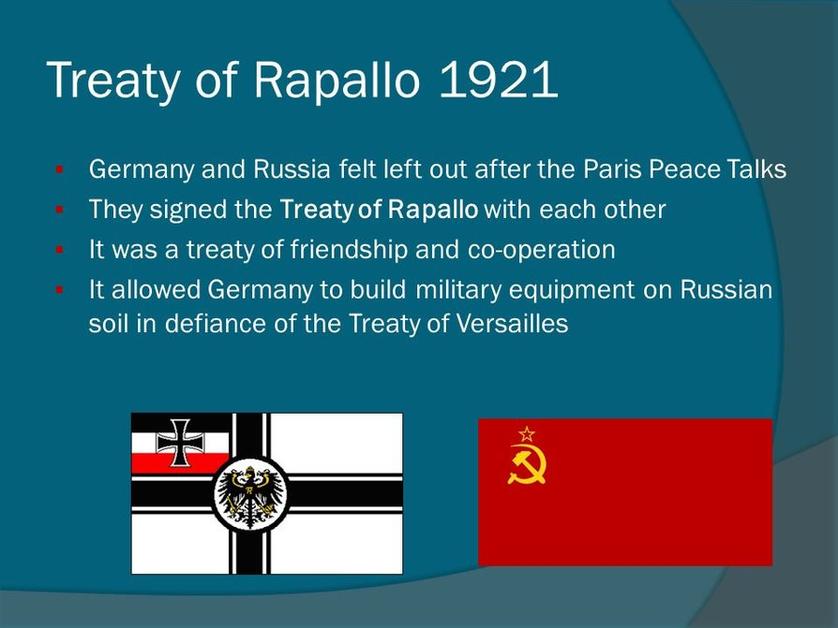
In the case of World War II, the early reluctance to enter the war rooted itself in strong isolationist sentiments across the American public and political institutions. Most Americans and members of Congress opposed war entry in the late 1930s and early 1940s. This widespread attitude made it politically difficult for the U.S. government to declare war before direct aggression occurred.
Moreover, the United States military was not fully prepared for immediate large-scale involvement in World War II. After World War I, the U.S. reduced its military forces significantly and faced challenges rebuilding them. For example, even after the attack on Pearl Harbor, conscripted troops made up a considerable portion of the military, indicating that a rapid immediate mobilization was not feasible.
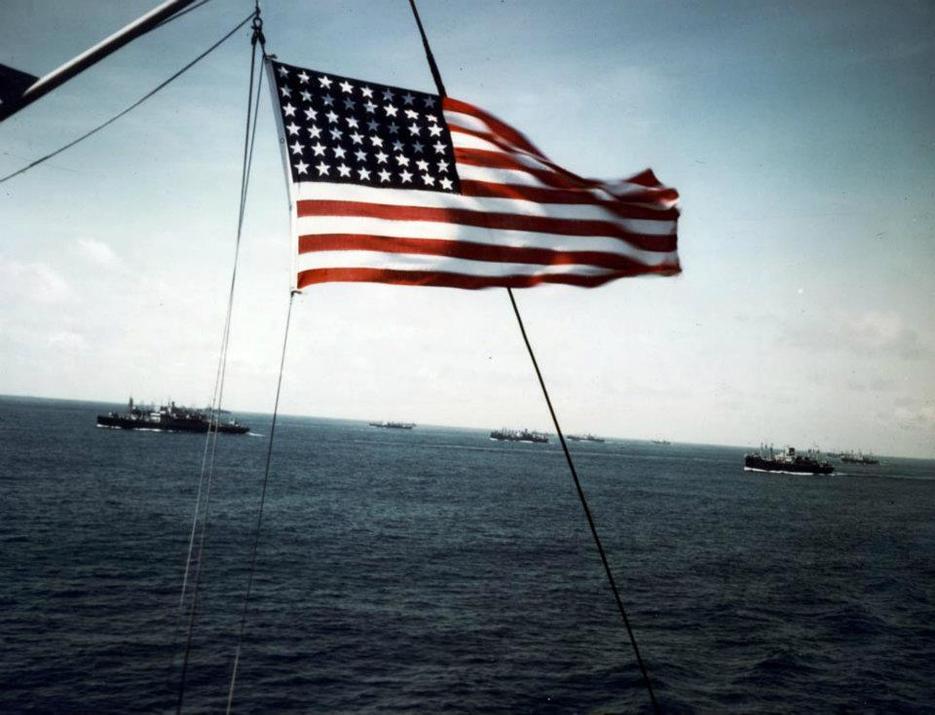
Despite neutrality, the U.S. supported Allied efforts via economic and material aid. The Lend-Lease program, initiated in 1941 before the attack on Pearl Harbor, allowed the U.S. to supply weapons and resources to the United Kingdom and other Allied nations. This policy reflected a middle ground—assisting the Allies while avoiding formal engagement in combat until later compelled by circumstances.
Presidential leadership in both wars played a crucial role in maintaining early neutrality. Wilson’s declarations in 1914 stressed impartiality and urged Americans to avoid taking partisan sides in the conflict. In World War II, presidential decisions balanced public opinion, military readiness, and international pressures. For detailed insight into the difficult choices leading up to U.S. involvement, historical literature such as “10 Fateful Choices” offers extensive analysis of administration policies and wartime strategy development.
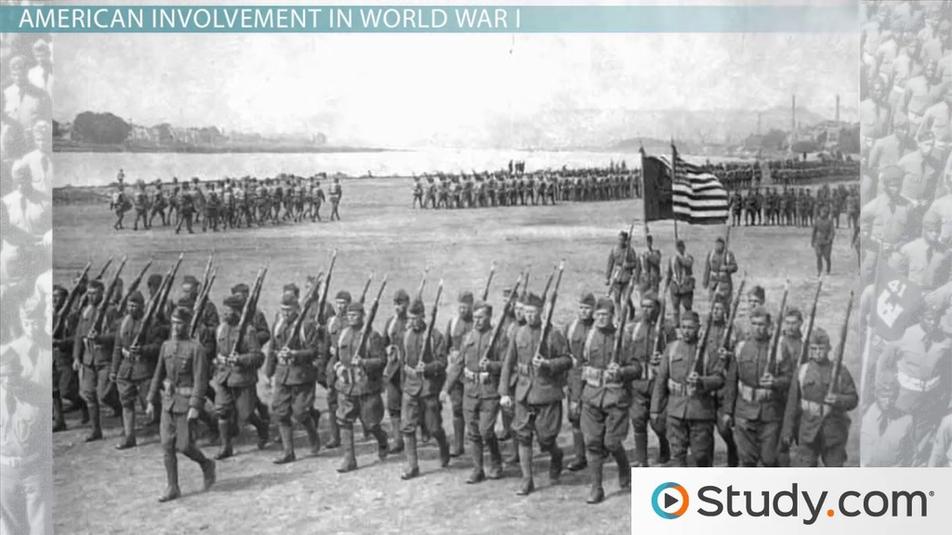
| Factor | World War I | World War II |
|---|---|---|
| Population Division | Ethnic diversity caused mixed loyalties, delaying commitment. | Less of a direct factor, but public opinion remained isolationist. |
| Public & Political Opinion | Strong desire for neutrality and avoiding internal conflict. | Dominant isolationist attitude prevented early war entry. |
| Military Preparedness | Military growing but not ready for large-scale intervention at war start. | Smaller military after WWI required rebuilding; conscription increased later. |
| Presidential Policy | Wilson urged impartiality and keeping nation united. | Leaders sought aid without war, later responding after direct attacks. |
- Diverse ethnic backgrounds complicated early U.S. positions in WWI.
- Isolationism and public reluctance delayed U.S. entry into WWII.
- Limited military forces and readiness restricted early involvement.
- Presidential neutrality policies sought to prevent internal divisions.
- Pre-war support for Allies came through programs like Lend-Lease before formal declarations.
Understanding these factors clarifies why the United States, valuing national unity and cautious engagement, delayed entering both World Wars until direct provocations and public will aligned with military capability.
Why Didn’t the United States Enter WW1 and WW2 Earlier?
The United States stayed out of both World War I and World War II for as long as possible because of a mix of ethnic complexities, isolationist attitudes, and presidential policies stressing neutrality—each war had its own flavor of hesitation before American involvement became unavoidable.
So, why all this waiting? The answer lies in understanding the unique American context at these two critical moments in history.
Ethnic Diversity: The Mosaic That Made Choosing a Side Tricky (WW1)
Imagine trying to rally a crowd where half the people root for one team and the other half cheers for the rival. That was basically early 20th-century America. The population came from many countries, including those now at war with each other.
“The people of the United States are drawn from many nations, and chiefly from the nations now at war… It is natural and inevitable that there should be the utmost variety of sympathy and desire among them with regard to the issues and circumstances of the conflict.”
With German-Americans, Irish-Americans, British-descendants, and more, any American president faced a ticking time bomb if they openly favored one side. This divided loyalty wasn’t just political—it touched the identity and emotions of ordinary citizens.
President Woodrow Wilson expressed this clearly in 1914: “The United States must be neutral in fact, as well as in name… We must put a curb upon our sentiments… that might be construed as a preference of one party to the struggle.” He understood that neutrality was not mere hypocrisy but a safeguard to keep internal peace.
The risk? As Wilson warned, “Such divisions amongst us would be fatal to our peace of mind and might seriously stand in the way of the proper performance of our duty as the one great nation at peace.” In short, jumping in too soon risked turning America into a battlefield of opinions and loyalties before it even entered the war physically.
Isolationism and Public Opinion: War? No Thanks! (WW2)
Fast forward to the 1930s and early 1940s. The U.S. remembered the horrors of WW1—dead soldiers, shattered families, and a long recovery. The public mood leaned heavily toward isolationism, meaning “not our fight.” Entering another costly war was unpopular.
“The government has to listen to what the people want, and not a lot of people wanted war.”
“Isolationism. There wasn’t enough support in either the general voting population or in Congress, which needs to vote to declare war.”
Also, the American military was tiny—downsized dramatically after WW1. The U.S. simply wasn’t prepared for a big fight. One historian notes that during WW2, even after Pearl Harbor, five-eighths of the U.S. military were conscripted, showing how stretched thin they were initially.
However, America didn’t just sit and twiddle thumbs. They sent vital resources and planes to allies, particularly the UK, through the Lend-Lease program starting in 1941—before actual combat involvement. This allowed the U.S. to support without stepping fully into battle.
The President’s Role: Steering the Nation Through Murky Waters
Both Wilson and Roosevelt walked a tightrope, balancing foreign policy, domestic opinions, and global events. Wilson’s 1914 Declaration of Neutrality was a call for impartiality: “Every man who really loves America will act and speak in the true spirit of neutrality.”
Wilson warned against partisanship that could lead to internal hostility and disrupt unity. This stance stayed firm until specific provocations forced America’s hand—like unrestricted submarine warfare by Germany or the Zimmerman Telegram.
For WW2, Roosevelt faced a similar dilemma. Even with war brewing globally, he had to manage a public hesitant to jump back in. The gradual inching toward engagement through aid (Lend-Lease) and military preparedness was a strategic move, softening the leap into full-scale war after Pearl Harbor.
For those interested in diving deep into the presidential decisions shaping America’s delayed entry into WW2, the book “10 Fateful Choices” offers detailed chapters on Roosevelt’s path to war. It’s a fascinating peek behind the scenes.
What Can We Learn from This?
The notion that America rushed into global war? Not quite. Early neutrality saved the nation from internal chaos and preserved unity at home. Waiting gave time to prepare militarily and politically. It meant the U.S. could build strength while fostering fairness in a divided nation.
It also highlights how public opinion shapes policy. Governments can’t ignore voters, especially in democracies. The reluctance to enter WW1 and WW2 wasn’t just stubbornness—it was democracy in action and a strategic pause.
Lastly, America’s delayed entry shows the complexity of global conflicts that aren’t just battles but entangled webs of ethnic ties, political will, and military capability.
In Summary
- WW1: Ethnic diversity and fear of internal divisions pushed the U.S. to neutral ground until clear triggers forced involvement.
- WW2: Isolationism and military unreadiness kept America on the sidelines longer, even though they provided aid via Lend-Lease to allies beforehand.
- Presidents: Wilson and Roosevelt prioritized national unity and impartiality before entering wars.
- Public Opinion: The will of the people and Congress played a massive role in delaying war declarations.
So next time someone asks, “Why didn’t the U.S. join the wars earlier?” remember—it’s not just about reluctance but a careful strategy amid complex social and political landscapes. Sometimes waiting isn’t weakness; it’s wisdom.
Why was the United States hesitant to join WW1 earlier?
The US had many immigrant groups from countries at war, creating divided loyalties. This made it risky to support one side and threaten national unity.
What role did President Wilson play in keeping the US neutral in WW1?
Wilson warned against taking sides or showing partiality to any nation. He urged Americans to stay neutral in thought and action to avoid internal conflict.
Why didn’t the US enter WW2 before the attack on Pearl Harbor?
Public and congressional opinion favored isolationism. The military was also small and unprepared, which delayed direct involvement despite supporting allies.
How did the US support the Allies before officially entering WW2?
The US provided resources through the Lend-Lease program, sending supplies and equipment to Britain and other allies without direct combat involvement.
What influenced the US decision-making process in remaining neutral initially for both world wars?
Leaders focused on keeping the nation united and impartial, considering public opinion, ethnic diversity, and military readiness before engaging in both wars.
